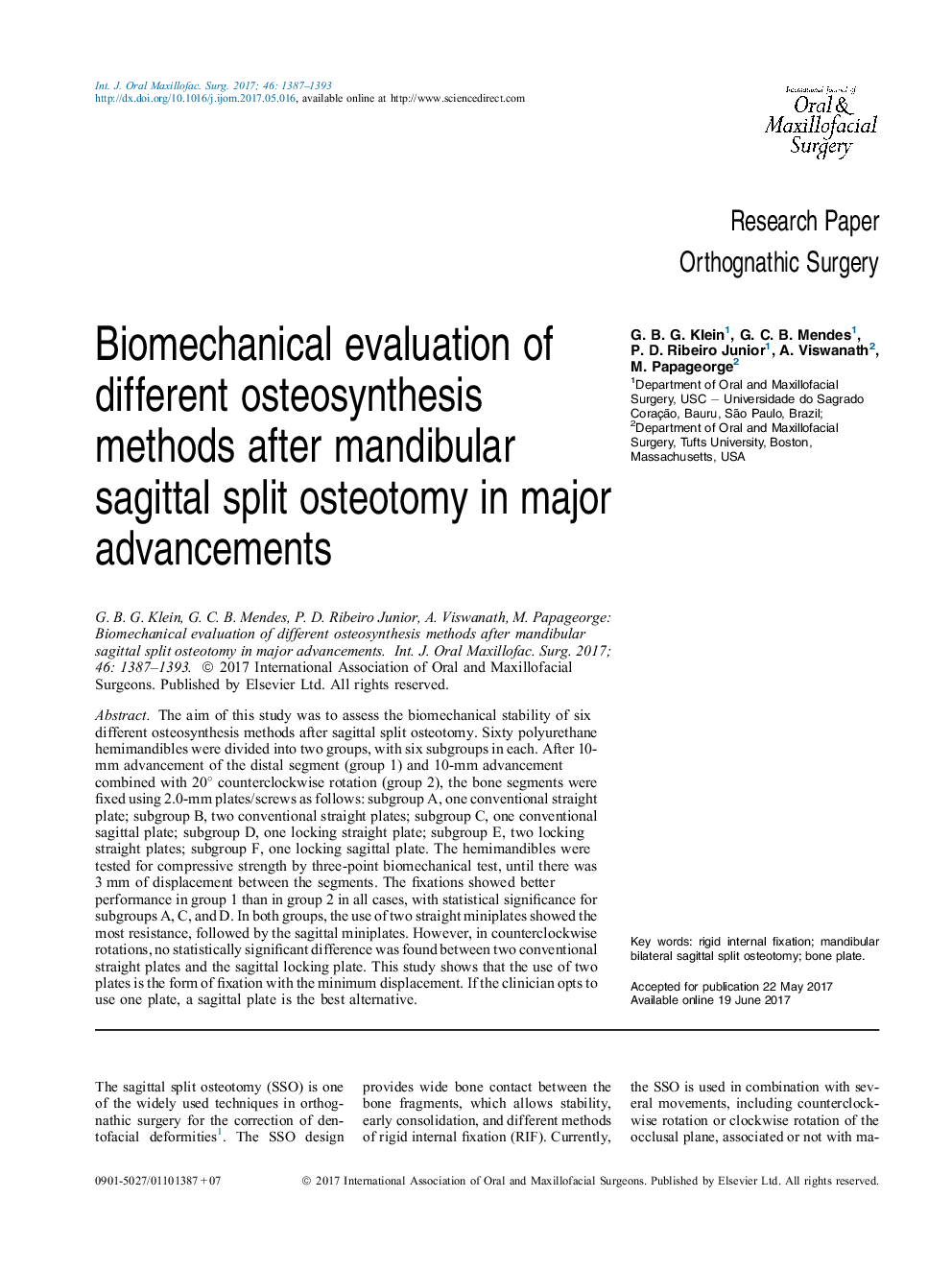| Article ID | Journal | Published Year | Pages | File Type |
|---|---|---|---|---|
| 5638786 | International Journal of Oral and Maxillofacial Surgery | 2017 | 7 Pages |
The aim of this study was to assess the biomechanical stability of six different osteosynthesis methods after sagittal split osteotomy. Sixty polyurethane hemimandibles were divided into two groups, with six subgroups in each. After 10-mm advancement of the distal segment (group 1) and 10-mm advancement combined with 20° counterclockwise rotation (group 2), the bone segments were fixed using 2.0-mm plates/screws as follows: subgroup A, one conventional straight plate; subgroup B, two conventional straight plates; subgroup C, one conventional sagittal plate; subgroup D, one locking straight plate; subgroup E, two locking straight plates; subgroup F, one locking sagittal plate. The hemimandibles were tested for compressive strength by three-point biomechanical test, until there was 3 mm of displacement between the segments. The fixations showed better performance in group 1 than in group 2 in all cases, with statistical significance for subgroups A, C, and D. In both groups, the use of two straight miniplates showed the most resistance, followed by the sagittal miniplates. However, in counterclockwise rotations, no statistically significant difference was found between two conventional straight plates and the sagittal locking plate. This study shows that the use of two plates is the form of fixation with the minimum displacement. If the clinician opts to use one plate, a sagittal plate is the best alternative.
